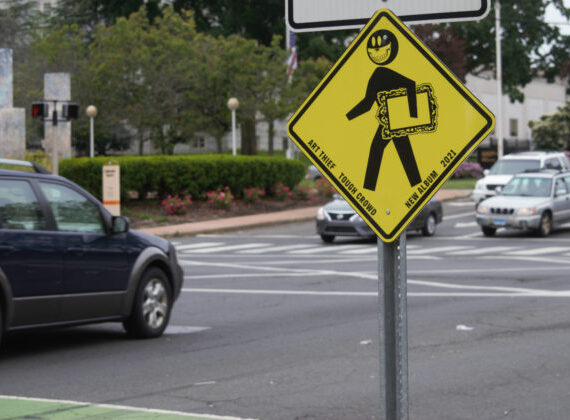

You don’t spray Pledge on 17th-century furniture. Instead, as tedious as it may be, you use a soft rag to remove dust. The Connecticut “Sunflower” Chests — one created last year, the other in the period from 1680-1710 — proved to be time-consuming in this way. This style of furniture is actually misnamed, as the flowers carved on the front are thought to be marigolds, a symbol of the Huguenots.
“A Tradition of Craft,” an exhibit that opened on Friday at the Connecticut Historical Society, features 34 current works by the Society of American Period Furniture Makers (SAPFM) and original examples from the museum’s collection.
The contemporary woodworkers — many of whom are from Connecticut — were asked to describe what inspired their work and what challenges they faced. The design of a piece challenged some while doing the physical work, while others struggled to source materials. Professionally-trained woodworker James Hardwick, creator of a Philadelphia Chippendale High Chest, said he used over fifty different carving tools for the carving aspects of this piece of furniture.
In a time when particle board bookshelves are the norm, it is not difficult to be impressed by handcrafted, American-made furniture. The SAPFM, founded in 1999, is one organization that supports the creation of furniture and furnishings, like clocks, that would not be found among the particle board in warehouses. The organization provides connections to resources like woodworking schools; one of these — the Connecticut Valley School of Woodworking — is located in nearby Manchester.

Also on display at this exhibit, which runs through September 8, 2012: the tools used to make furniture. A gimlet from Hartford is among the 18th and 19th-century woodworking tools from the Connecticut Historical Society’s collection. Some materials in this room, like books and a chair, are hands-on, but the majority of the exhibit is not.
Eli Terry of Connecticut patented a shelf clock in 1816, an invention which made clock-ownership possible for those who could not afford the large grandfather clocks. One of his clocks is displayed on the same shelf as reproductions created in 2007 and 2010.
Craftsman John Davis of Virginia is attempting to build what he calls “one quintessential piece of furniture from each of the thirteen colonies.” The piece on display at CHS is a Robert Walker Virginia Tea Table reproduction; the inspiration for this is at the Stratford Hall Plantation, the birthplace of Robert E. Lee. Davis says he has hopes of creating a Chapin reproduction for Connecticut, but this might not happen until a few years down the road.
To coincide with this exhibit, CHS has a lecture series planned, as well as a family day on June 2nd which will include a carving demonstration. For information on hours and prices, check out the CHS website or call 860.236.5621. There is free admission to the museum on April 7th from 9am-1pm.
